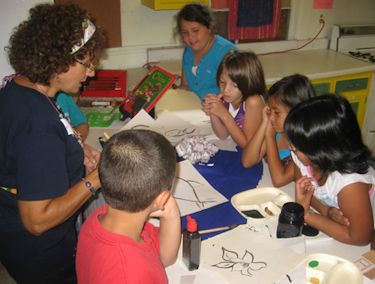WILMINGTON — The work of the N.C. Coastal Federation, like the coastal environment it is incorporated to protect, is an intricate spider web of activity.
At the center of this web are a variety of hands-on activities that interact directly with the coastal environment — volunteers planting cordgrass and cypress trees as part of the North River Farms restoration in Carteret County, for example, or the construction of an oyster reef in the White Oak River in Onslow. As the web widens, you’ll find people taking action to forestall present or imminent threats to the environment, as the Stop Titan Action Network in New Hanover County continues to do. You’ll find people making trips to Raleigh designed to tackle thorny legislative issues, and a house, making a trip along the Intracoastal Waterway, to become the federation’s new southeast regional home.
Supporter Spotlight
 Emily Colin |
A touch at any given point on this web of activity, no matter how seemingly insignificant, has a way of quivering the entire structure, demonstrating the vital connections between our coastal environment, the people who inhabit it and the work being done to protect both.
A recent addition to this web, found in a section linking art and science, has been a collaboration between the federation, local members of the American Society of Landscape Architects and Dreams of Wilmington, a non-profit youth development program which provides kids in need with high-quality, free-of-charge programming in the literary, visual and performing arts.
It began when the society designated 2013 as the year of public service and set its nationwide membership to the task of providing free design services. Local architects Tim Clark, Roy Pender and Howard Capps in August started talking about groups in the Cape Fear region that might benefit from their services. Pender then had a chance meeting with Lauren Kolodij, the federation’s deputy director. She introduced the architects to Tracy Wilkes, executive director of Dreams of Wilmington, which, in collaboration with Wilmington, was looking to improve its headquarters site at 901 Standing St.
“The demand for programs was exceeding our available space,” said Emily Colin, Dream of Wilmington’s associate director, “and (the available property to expand) was raw and empty.”
Not for long, though, thanks in part to the multi-faceted contributions of the federation, the local architects and a grant from the N.C. State Cooperative Extension. All invested in seeing that the emerging development of the 10 or so acres incorporated design that would reduce stormwater runoff from the site.
Supporter Spotlight
“The city of Wilmington directed us to the site,” said Christy Perrin, program manager for the extension’s Watershed Education for Communities and Officials program. “We submitted a grant proposal to the Environmental Protection Agency last year to implement stormwater retro-fits at the Dreams site, where there is (presently) no stormwater management; water from the site runs directly into a creek.”
Though still in the planning stages, the project will entail a series of retrofits that will include water treatment, rainwater capture, harvesting, a rain garden and a change from impervious to pervious pavement in the area.
 Dreams of Wilmington provides children free programs in literary, visual and performing arts. Photo: Dreams of Wilmington |
“With impervious pavement,” Perrin explained, “water just slides right off. Pervious pavement will soak up that water and let it soak into the ground.”
With the collaboration of the federation and the local architects, the project evolved from the Cooperative Extension’s original plans for simple stormwater retro-fits into a major development project that would include outdoor classroom spaces and studios, a roof structure to an outside sitting area, an outdoor performance space to accommodate 100 people, a sculpture garden, a raised vegetable/flower garden and a rain garden with parking facilities.
Seemingly incapable of allowing an educational opportunity to pass them by, Dreams of Wilmington and the federation shared a series of 100 images that illustrated these types of facilities with Dream students and staff at a design workshop. At that workshop, the Wilmington’s Steve Harrell presented a brief history of the site, and Perrin offered a presentation on the grant proposal. Capps reviewed an aerial photo of the site with the assembled students, discussed the study area and introduced a workshop exercise, which included a brief review of the 100 images. Students were asked to identify (with orange stickers) up to 12 photo images of facilities they would like to see on the site and were given the opportunity to stand and share with the group why they selected certain photos. The design team was able to benefit from understanding why certain images were selected.
It is all, said Colin, in keeping with Dreams of Wilmington’s commitment to environmental awareness; a commitment exemplified by the organization’s recent collaboration with the Fort Fisher Aquarium. Students participated in field trips to the aquarium, which culminated in an organizationally-appropriate Arts Day, centered on the experience.
“Many children feel profoundly disconnected from their environment,” she said, “and so many children live here who never get to the aquarium. It was a non-traditional partnership, building on the theme of increasing environmental knowledge and awareness; values that we’re always trying to instill, to create committed students.
“It wasn’t just about formal knowledge,” she added, “but experiential, hands-on education, working with others and creating something, as a result. It furthered the aquarium’s goals, as well as our own.”
 Howard Capps |
So, too, she went on to say, with this emerging project at the organization’s headquarters, where, in the design stages, students have already been afforded the opportunity to not just watch, but participate.
“So, for us,” Colin said, “the idea of this project was a teaching opportunity. We ask them ‘What is a rain garden?’ and ‘Why should you care?’ We ask them to determine what role they can play and how they can help to design it.
“It’s an opportunity for discovery and learning,” she said. “A little piece of empowerment that helps makes our students positive stewards of their environment.”
Sometime this month, the local architects, the federation, Dreams staff and the Cooperative Extension will meet to update ongoing plans and create a timetable for the entire project, which could be completed within a year.







